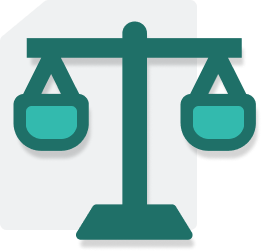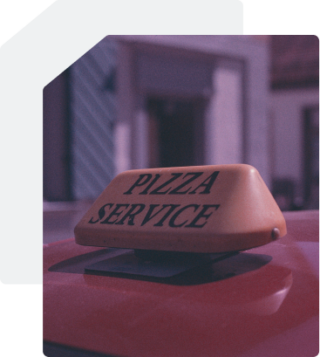Incorporating accessibility practices across your organization Part I
In this multi-part series, we will look at why your organization should include accessibility practices, what your organization’s accessibility goals need to be, and finally, how to integrate repeatable accessibility practices across your organization’s products and digital spaces.
You’ve likely heard it before: a focus on accessibility within a digital space often improves usability for all. But did you know that improved accessibility also takes all, meaning solid solutions cannot just be the responsibility of one person or even one role within an organization? Whether you’re a UX Designer, a Project Manager, a Technical Lead, or a CEO, this series of articles is meant to serve as both education and resource, helping you understand and implement accessibility practices across your organization.
Senior SharePoint Developer
Limina is looking for a talented Drupal Developer to work with its established team of cross-functional UX and Technical professionals. We present a unique opportunity for talented individuals who thrive in creative, entrepreneurial environments. If you’re excited about the challenge of building a dynamic company,…
Drupal Developer
Limina is looking for a talented Drupal Developer to work with its established team of cross-functional UX and Technical professionals. We present a unique opportunity for talented individuals who thrive in creative, entrepreneurial environments. If you’re excited about the challenge of building a dynamic company,…
Careers
UX is a team sport, and we're recruiting! We're looking for inspired UX and Technical consultants who come to leave it all on the field. Great UX work takes a team who revel in the journey and who know the value in loving the problem, not the solution. Joining our team is a commitment to drive innovation by…
Join the Team
We’re always looking for UX and Technical talent to design and build innovative solutions. We present a unique opportunity for talented individuals who thrive in creative, entrepreneurial environments. If you’re excited about the challenge of building a dynamic company, community, and brand—and are passionate about…
Compliance FOMO: Why your organization needs to incorporate accessibility practices
Accessibility work is a collaborative, cross-discipline, cross-phase effort that requires a game plan and management. And as with any new initiative within an organization, it starts with a question: what is your organization missing out on by not incorporating accessibility?
According to the W3C: Web Accessibility Initiative (the international folks behind the Web Content Accessibility Guidelines, a.k.a WCAG) there are four main reasons every business should integrate digital accessibility as part of their standard processes.

1. It drives innovation
As stated in the intro, solutions, and features created to support accessibility often improve usability for all and can even solve unforeseen issues. This pattern of cascading benefits occurs so often that it has its own name: The Curb-Cut Effect.
If you’re not familiar, curb-cuts are the indentions in sidewalks, originally designed as a way to better support wheelchair users. The solution not only benefited the intended audience but many others including cyclists, people with strollers, people pulling suitcases, and package delivery workers.

It comes as no surprise that The Curb-Cut Effect can be seen in digital spaces as well, possibly even more so. In 2016, a FastCompany article mentioned by the W3C highlighted how Google’s investments in accessibility have netted them multiple innovations such as:
- Contrast minimums initially followed to support those with vision impairments, has been shown to help all folks see better when in bright light or high-glare situations
- Auto-complete was initially provided to better support folks with a variety of disabilities but is now widely used by many users to speed up task time
- Voice control was initially implemented for users with physical impairments but is now utilized by nearly all users, especially within the context of specific activities such as driving

2. It enhances brand and performance
In recent years there has been a greater focus on Corporate Social Responsibility (CSR) often referred to as ‘Responsible Business’. Responsible businesses are those that practice not only environmentally sustainable practices but socially responsible as well.
A 2017 Unilever report showed that 78% of consumers in the US say they feel better when they buy products that are sustainably (both environmentally and socially) produced. That number increases in India, Brazil, and Turkey.

Another study from 2011 conducted by the Harvard Business School and London Business School titled The Impact of a Corporate Culture of Sustainability on Corporate Behavior and Performance (cited in Business Ethics magazine) found that companies who include responsible business practices outperform those with low sustainability. Their study showed that a $1 investment grew to $22.6 over seven years with a sustainable company, but only grew to $15.4 with a low sustainability company, stating that:
“Overall, we find evidence that firms in the High Sustainability group are able to significantly outperform their counterparts in the Low Sustainability group. This finding suggests that companies can adopt environmentally and socially responsible policies without sacrificing shareholder wealth. In fact, the opposite appears to be true…”
The focus on responsible businesses is likely to increase due to the wide media coverage of the economic and social impacts of the pandemic.
Did you know that improved accessibility also improves SEO?


3. It extends your market reach
The question organizations need to be asking themselves isn’t “can we afford to be accessible?”, it’s “can we afford not to be?” Designing (that’s with a capital D) for accessibility is not designing for edge cases. We’re talking about a very large potential market; depending on the context, sometimes it’s the whole market.

- According to a 2003 nationwide Forrester study, 74.2 million Americans between the ages of 18 and 64 could benefit from an accessible technology due to visual, dexterity, and hearing difficulties that ranged from mild to severe. That equates to 57% of the U.S. workforce.
- Prior to COVID-19, 5.6% of working Americans experienced a short-term or temporary disability each year, due to illness, injury, or pregnancy. This number could very well increase in the coming years.
- In 2040, 80 million Americans will be 65 years of age or older, approximately two in five of which will be affected by a disability.
- Globally, over 1 billion people have a recognized disability. Their combined annual disposable income is estimated at $6.9 trillion.
- Contextual impairments like driving, cooking, or being in a loud environment affect essentially everyone at one point or another.

4. It minimizes legal risk

Domino’s v. Robles
Guillermo Robles, a California man with a vision impairment, sued Domino’s when both their mobile app and website proved inaccessible (unusable) to his screen reader. He argued that Title III of the Americans with Disabilities Act (ADA) which prohibits discrimination on the basis of disability in the “activities of places of public accommodations” (including private businesses that are generally open to the public) covered digital and online spaces as well.
In 2019 the Supreme Court denied a petition from Domino’s, thus leaving in place the lower court decision against the company. This set a precedent in the public sector. Over 2,200 suits similar to Robles’s were filed in federal courts in 2018, three times that of the year before.
As you can see, including accessibility practices and considerations across your organization’s products and digital spaces is not a “niche”, “going the extra mile” or even a “nice to have”. It’s an opportunity: to innovate, to enhance your brand, to extend your market reach, and to protect your organization’s future.
Companies are feeling the social and economic impacts of this past year, and the uncertainties it created are not going to simply vanish in the new year. It can feel like the wrong time to institute any type of change, but moments like these actually provide a unique opportunity to adapt and to improve processes and practices, to ensure that your organization does not miss out.
As stated in the intro, this article is the first of a multi-part series. In the next article, we’ll take a deeper look at what accessibility standards your organization should aim to meet, how they’re organized, and what digital spaces those standards apply to.
For more information on WCAG head over to the W3C site and feel free to check out one of our earlier accessibility articles on Web Content Accessibility Tools for UXers.
Have questions? Feel free to reach out at hello@limina.co.
I am text block. Click edit button to change this text. Lorem ipsum dolor sit amet, consectetur adipiscing elit. Ut elit tellus, luctus nec ullamcorper mattis, pulvinar dapibus leo.



